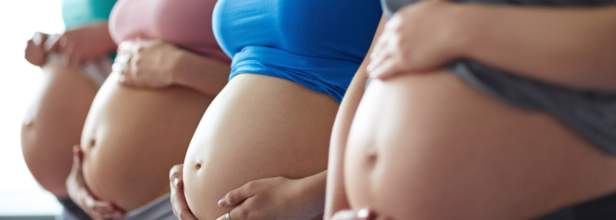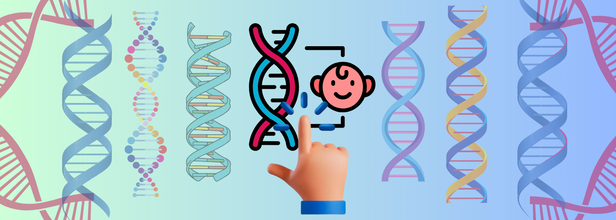- Health Conditions A-Z
- Health & Wellness
- Nutrition
- Fitness
- Health News
- Ayurveda
- Videos
- Medicine A-Z
- Parenting
- Web Stories
Winter Skincare Tips For Children: Pediatrician’s Guide To Protecting Sensitive Skin

Image Credit: Canva
Winter is a magical season filled with the joys of holidays and snow, but for children, it can bring unique skin challenges. Kids sensitive and fragile skin requires special care as the frigid air, low humidity and frequent indoor and outdoor temperature fluctuations remove moisture leading to dryness, irritation, and cracking of their delicate skin. In some cases, this dryness causes redness and itching of which children often aggravate them by scratching.
Understanding the structural differences between adult and infant skin is crucial for developing a winter skincare routine. Baby skin, thinner and more fragile than adult skin, takes about two to four years to fully mature. The underdeveloped outermost layer, known as the skin barrier, plays a vital role in retaining moisture and defending against irritants. For infants, this barrier is 30% thinner than in adults, making them more susceptible to transepidermal water loss (TEWL). This can result in visibly dry and flaky skin, especially during winter when environmental conditions are harsh.
Common Winter Skin Issues in Children
Several skin concerns emerge for children during winter:
Chapped Lips
This is another very common issue and due to dry winds, poor water intake, and an overall dry season. The children end up peeling off the dry layer on their lips that often leads to bleeding and soreness.
Dry Skin
Cold winds tend to drain natural oils from the skin, making it dry, rough, and itchy. Sometimes, it leads to conditions such as eczema or causes rosy cheeks looking cute but showing irritation.
Dandruff
Winter dryness doesn't spare the scalp. Hot water baths also make things worse as it washes away the natural oils on the scalp, making it itchy and flaky. Children who may scratch the scalp would make it visible with flakes.
Expert-Recommended Winter Skincare Tips
While these issues may seem concerning, simple steps as shared by Dr Kushal Agrawal, HOD, Department of Neonatology and Paediatrics which can help make a significant difference in maintaining healthy skin throughout the winter months. Here's a list to follow:
1. Gentle Bathing Habits
Bathing is not required daily in winter and may even exacerbate dryness. For most children, bathing two to three times a week is sufficient unless local traditions require more frequent bathing. Bath times should be brief, no longer than 10 to 15 minutes, and lukewarm water should be used to avoid stripping the skin of its natural oils. Avoid bubble baths and harsh soaps that can upset the pH balance of the skin. After bathing, pat the skin dry with a soft, warm towel and immediately apply a moisturizer to lock in hydration.
2. The Benefits of Oil Massage
Oil massages are not just a cultural tradition; they are an effective way to nourish and protect your child's skin. Pediatricians recommend using safflower, sunflower, or almond oil for massages as these promote skin barrier recovery. Avoid mustard or olive oil, which can irritate the skin. Warm the oil slightly before applying and massage gently, avoiding vigorous rubbing.
3. Moisturization Is Key
Choose emollient-based moisturizers that are free of dyes, perfumes, and preservatives to minimize irritation. The petrolatum-containing products are especially helpful in forming a barrier against moisture loss. Apply the moisturizer immediately after bathing and as needed throughout the day, focusing on areas prone to dryness like hands, cheeks, and knees.
4. Dress for Protection
Dressing children appropriately is essential to shield their skin from the harsh winter elements. Opt for soft, breathable layers of cotton clothing that can be adjusted based on the temperature. Ensure that any woolen clothing worn is lined with cotton to prevent direct contact with the skin, which can cause irritation.
5. Maintain Indoor Humidity
Indoor heating, though necessary for warmth, tends to dry out the air. This worsens skin problems. A humidifier will ensure humidity in your home is adequate. In this way, the air does not draw moisture from the skin. Concomitantly, remind your child to drink lots of water to hydrate from within.
6. Special Care for Chapped Lips
Apply child-friendly lip balm with enriching substances, such as shea butter or lanolin. Flavor-free balms will not have the risk of getting eaten into a puffed lip, as this often is exacerbated by children licking dryness out.
7. Scalp Care
When a child is developing dandruff, use an even mildly moisturizing children-friendly shampoo on your little one and cool water, gently massaging their scalp as they're washed, making the effort of removing flaking, irritation-inducing flakes more comfortable on them.
When to Consult a Pediatrician
If your child’s skin issues persist despite these measures, or if conditions like eczema worsen, it’s essential to seek advice from a pediatrician. Persistent dryness, redness, or itching may require prescription-strength treatments or further evaluation.
Children's skin, especially during winter, is a sensitive area that requires extra love and care. Such mindful practices as using the right oils and moisturizing regularly and protecting it from harsh weather will help your child develop soft, healthy skin for every season. This is not only a matter of comfort but also instills lifelong habits in caring for one's skin.
Dr Kushal Agrawal is HOD with the Department of Neonatology and Paediatrics at KVR Hospital, Kashipur, India
Why Some Families Only Have Boys Or Girls? Science May Finally Have The 'Secret Code'

Credits: Canva
Is the sex of your child really just a coin toss? For generations, we’ve accepted the idea that every pregnancy comes with an even 50-50 shot of producing a boy or a girl. But new research suggests that might not be the full story.
A study published in Science Advances challenges this long-held belief and adds a fascinating new layer to our understanding of human reproduction. Drawing from data spanning nearly 60 years and over 58,000 pregnancies, researchers found compelling evidence that the biological sex of children may sometimes run in families — and that age, genetics, and possibly other overlooked factors could nudge the odds away from that supposedly fair coin flip.
The 50-50 Myth?
At first glance, the logic behind the 50-50 assumption seems solid. Sex in humans is determined primarily by whether the sperm that fertilizes the egg carries an X chromosome (resulting in a girl) or a Y chromosome (resulting in a boy). Since roughly half of a man’s sperm carry each chromosome, it stands to reason that the odds of having a boy or a girl should be equal — right? Not exactly.
Dr. Jorge Chavarro, a reproductive epidemiologist at Harvard T.H. Chan School of Public Health and senior author of the study, wasn’t so sure. Along with PhD student Siwen Wang and a team of collaborators, Chavarro analyzed pregnancy and birth data from the long-running Nurses' Health Study — a landmark series of investigations into women’s health dating back to 1976. They focused on a group of more than 58,000 women who had at least two children.
The team noticed something striking: far more families than expected had multiple children of the same sex — all girls or all boys — especially among women who had their first child later in life. These clusters couldn’t be explained by chance alone.
In other words, some families seemed “tipped” toward having one sex over the other — and the tilt wasn’t always subtle.
Why Age Matters But Not In the Way You Think?
One of the clearest signals in the study was maternal age. Women who had their first child after the age of 28 were about 10% more likely to have all girls or all boys than women who started their families before age 23. It’s a modest but statistically significant increase that held up even after adjusting for various other factors.
It comes down to the biology of reproduction and how it changes over time. As women age, they undergo shifts in the vaginal environment and reproductive hormones that could influence which sperm — X or Y — are more likely to reach and fertilize the egg. For instance:
The vaginal environment may become more acidic with age, and X-carrying sperm (which are slightly larger and more chemically robust) may survive better in such conditions.
The first phase of the menstrual cycle, called the follicular phase, tends to shorten with age. Some researchers believe this could create changes in cervical mucus and oviduct fluid that favor Y sperm instead.
These competing factors mean the impact of aging on sex outcome may not be uniform — it could vary depending on individual biology. But the net result is that older maternal age seems to increase the odds of having children all of the same sex.
Another eye-opening part of the study was its genetic analysis. Researchers examined genetic data from a subset of over 7,500 women and found two specific gene variants that were significantly associated with single-sex offspring.
One gene variant (located near NSUN6) was linked to having all daughters.
Another (near TSHZ1) was associated with having all sons.
These genes aren’t currently known to affect fertility or reproduction directly, and their exact roles remain unclear. But their presence suggests a biological basis for sex-skewed births in some families — an area ripe for future research.
In short, while we’ve long believed sex determination is a random roll of the dice, some people might have a “weighted coin” — without ever realizing it.
Could Behavior Be Driving the Pattern?
Some might wonder: what if this pattern is just driven by behavior? For instance, parents who have two boys might keep trying until they have a girl, leading to more same-sex siblings by default. The researchers considered this too.
To rule out this explanation, they ran an analysis excluding the last birth in each family — the one most likely to be affected by the decision to stop having more children after getting “one of each.” Even then, the same-sex clustering held strong.
That suggests something deeper is going on, rooted in biology rather than just human choice.
What This Means for Expecting Parents?
So, what should couples take away from this? First, there’s no need to overthink your chances if you’re planning to start a family. Across the entire population, the average likelihood of having a boy or a girl still hovers close to 50%. But for some individual families, those odds may be subtly skewed by age, genetics, and biological quirks we’re only beginning to understand.
Importantly, the study also highlights just how much we still don’t know about sex determination and human reproduction. It opens new avenues for exploring how maternal and paternal factors interact — and how genetic and environmental forces shape outcomes in subtle but meaningful ways.
Wang and her team hope to replicate the findings in more diverse populations and include paternal data in future analyses. Since most participants in this study were white and from the U.S., it’s not yet clear how these patterns hold across other racial, ethnic, and geographic groups.
This research doesn’t rewrite the biology of reproduction — but it does suggest that some old assumptions might be oversimplified. Sex may still be determined by the X or Y chromosome in sperm, but the journey to conception is influenced by a dynamic, personal landscape of biological factors.
What the study captures is a new lens: a shift away from the purely statistical view of childbirth toward a more personalized understanding of how life begins.
And perhaps, for families that have always wondered why they have “just boys” or “just girls,” the answer might be: it’s not just chance. It might be part of your biological story written long before the baby arrives.
Russia Is Paying Pregnant Schoolgirls To Have Babies, Why Is It Unsafe?

Credits: Canva
In a startling attempt to reverse its plummeting birth rate, Russia has expanded its state maternity incentive to include pregnant teenage schoolgirls, offering them over 100,000 roubles (around ₹1.1 lakh) to carry pregnancies to term and raise their children. The controversial policy, rolled out in 10 regions in recent months, follows a nationwide demographic strategy initiated in March 2025 that originally applied only to adult women.
The move is aimed at addressing Russia’s birth rate crisis: in 2023, the average number of births per woman was 1.41, well below the 2.05 needed to maintain population levels.
President Vladimir Putin has often tied Russia’s greatness to its size, in terms of both land and people, and views population growth as a marker of national strength. Ironically, the war in Ukraine, which has drained Russia’s youth through deaths and displacement, has also contributed to the demographic downturn.
However, by placing the responsibility of national recovery on teenage girls, health experts warn, the country may be plunging an already vulnerable group into serious and avoidable harm.
What the World Health Organization Says
According to the World Health Organization (WHO), adolescent pregnancies, particularly in girls aged 10–19, carry significantly higher health risks compared to adult pregnancies. These include life-threatening conditions such as eclampsia, puerperal infections, and systemic complications during childbirth. The children of teen mothers also face higher odds of low birth weight, premature birth, and neonatal complications.
Globally, adolescent pregnancy accounts for a troubling portion of maternal deaths. In fact, the leading causes of death among girls aged 15–19 worldwide are complications from pregnancy and childbirth.
And yet, rather than protecting schoolgirls from these outcomes, Russia’s current policy may be incentivizing them.
Teen Bodies, Adult Consequences
Medical experts, including Dr. Ekta Singh, who works at Lybrate, an Indian mobile health communication and delivery service, who is a gynaecologist with 29 years of experience, caution that teenage pregnancies can be catastrophic for both the mother and child. “Girls under 15 face higher maternal mortality,” Dr. Singh writes, noting the elevated risks of anemia, hypertension, STDs, and organ malformations in the fetus.
Additionally, mental and social consequences are deeply interwoven: many teenage mothers are forced to drop out of school, remain single, and are pushed into poverty, with little access to adequate healthcare or family support systems.
According to a 2022 review published in Cureus, unwanted teenage pregnancies are closely linked with stillbirths, spontaneous abortions, preterm labor, and obstructed deliveries, sometimes resulting in maternal death due to the immaturity of the pelvic structure.
Teen mothers are also less likely to access timely prenatal care, either due to shame, stigma, or sheer lack of awareness. Many don't even realize they're pregnant until the third trimester, by then, critical stages of fetal development have already passed without necessary medical supervision.
A Nation's Future on Girls’ Shoulders
While 43% of Russians reportedly support the new policy, and 40% oppose it, cites a recent survey by the Russian Public Opinion Research Centre. What remains alarming is the human cost of this demographic experiment. The payment, which may seem like a windfall to families struggling with poverty, could, in reality, be bait for systemic harm.
The WHO emphasizes that preventing adolescent pregnancy is essential to improving maternal and newborn health worldwide. That means better sex education, accessible contraception, and societal support to delay early pregnancies, not rewarding them.
Meanwhile, the 2022 Cureus study underlines how teenage pregnancies contribute to a cycle of intergenerational poverty, poor health outcomes, and educational dropouts. Babies born to teen mothers are more likely to become teen parents themselves, continuing the same pattern of vulnerability.
Paying teenage girls to have babies may temporarily raise Russia’s birth figures, but it ignores a painful truth: adolescence is not a time for forced motherhood.
The Dream Of 'Super Breed Babies' Is Becoming A Reality In Silicon Valley, Babies Are Now Not Just Born, But Selected

Credits: Canva
When Roshan George and Julie Kang were told during IVF testing that they both carried a rare gene linked to early-onset hearing loss in infants, they didn’t hesitate to dig deeper. Like many in San Francisco’s tech scene, they turned to data. It was not just any data, but a full genomic analysis of their embryos from a start-up called Orchid.
It cost them $30,000 to screen 12 embryos. Six were viable. They sorted through risk scores for everything from bipolar disorder to type 2 diabetes, eventually selecting the embryo with the best odds. Their daughter, Astra, was born this March. She was healthy and was born with perfect hearing.
What this couple did might sound like a glimpse into the distant future. But in Silicon Valley and beyond, it’s already happening.
Silicon Valley’s Fertility Revolution
Orchid, a fertility start-up based in San Francisco, reports the Washington Post, is spearheading a radical new chapter in human reproduction. Founded by Noor Siddiqui, the company offers whole-genome sequencing of embryos created through IVF, allowing parents to screen for over 1,200 single-gene disorders, and to assess the embryo’s genetic risk for more complex diseases like cancer, schizophrenia, and Alzheimer’s.
In Siddiqui’s words, the goal is to help build “a generation that gets to be genetically blessed and avoid disease.”
At $2,500 per embryo, in addition to the roughly $20,000 average cost of one IVF cycle, the service is far from accessible to everyone. But in data-driven tech hubs like San Francisco and Austin, it’s catching on fast.
Sex Is For Fun. Embryo Screening Is For Babies
“Sex is for Fun. Embryo Screening is for Babies.”
That’s how Siddiqui sums up the shifting mindset. She imagines a future where sex is decoupled from reproduction, and where couples routinely pick their children using spreadsheets and algorithms. Sounds too robotic? But it really isn't even a distant future, it is slowly becoming reality.
At a private dinner party in Austin last spring, Siddiqui pitched her vision to a group of women sipping mocktails and wearing pastel baseball caps with one word: BABIES.
One of the attendees, reports the Washington Post, Shivon Zilis, who is a tech executive and mother to several of Elon Musk’s children, is reportedly an Orchid client. Sources say at least one of her children with Musk is an Orchid baby.
Siddiqui, now 30, plans to have four children herself using embryos screened by her own company.
The Promise of Prediction
So how does it work? Orchid uses five cells from an early-stage embryo to sequence the full human genome, a feat many geneticists previously believed impossible. It then uses machine-learning models to produce polygenic risk scores, predicting an embryo’s likelihood of developing certain diseases.
Backed by high-profile investors like Coinbase CEO Brian Armstrong and Ethereum co-founder Vitalik Buterin, Orchid is now in over 100 IVF clinics in the U.S.
The tech is built for a specific demographic: affluent, tech-savvy, data-worshipping individuals willing to invest in what one investor called a “genetic trust fund” for their future kids.
A Trust Fund of Traits Or Modern Eugenics?
The term eugenics makes many recoil. Siddiqui distances herself and her company from the idea, and insists the goal is about health, not perfection. But critics are wary.
When you screen for risk factors like schizophrenia, are you also unintentionally screening out traits tied to creativity? Could polygenic scores become a gateway to selecting for intelligence, height, or athleticism? And is this a privilege only the rich can afford?
Some scientists argue and the Washington Post reports, that these tools give an illusion of control. “It’s easy to moralize from an ivory tower when your child isn’t the one who might be born with a fatal disease,” said Orchid spokeswoman Tara Harandi-Zadeh.
Still, others worry about the science itself.
The Fault in the Genes?
One of Orchid’s biggest scientific claims is that it can sequence an entire genome from just five embryonic cells. This is hotly contested. Svetlana Yatsenko, a clinical genetics expert at Stanford, called it “basically Russian roulette,” citing errors introduced in the DNA amplification process.
Others are skeptical of the reliability of polygenic risk scoring, especially for traits like intelligence where predictive accuracy is extremely low, just a few IQ points at best. These risk scores also struggle with accuracy in non-European populations because the databases they draw from are largely Eurocentric.
Siddiqui acknowledges the challenge. Her husband is Middle Eastern, and she herself is South Asian. She says Orchid adjusts for population bias and, in some cases, doesn't offer scores at all.
No Rules, All Risks?
What’s striking is the lack of regulation. In the U.S., there are no real restrictions on what kinds of predictions companies like Orchid can sell. Their algorithms are proprietary and not vetted externally.
Despite the American College of Medical Genetics and Genomics advising against embryo screening for polygenic risks and calling the benefits “unproven”, companies are surging ahead. A newer Thiel-funded start-up, Nucleus, claims it can screen embryos for more than 900 traits and conditions.
As Peter Kraft, a Harvard expert on polygenic scores, put it: “The science doesn’t add up.”
Still, Parents Want Information
Despite the skepticism, demand is rising, notes the Washington Post. Many parents, especially those facing infertility or rare genetic conditions, are desperate for clarity. The George-Kang family didn’t expect certainty. They just wanted more information, more peace of mind.
“I think everyone who wants to have a baby should be able to have one,” Siddiqui told The Washington Post. “And they should be able to have a healthy baby.”
Critics might call it premature, or even dystopian. But to Siddiqui, it’s personal. Her mother lost her sight to a rare genetic disease. To her, it’s not just about tech, it’s about giving families a fighting chance.
The Future of Fertility
Whether Orchid’s vision becomes mainstream or remains an elite niche remains to be seen. But the door has opened to a future where reproduction is shaped not by nature, but by code, choice, and capital.
The baby of tomorrow may not be conceived in passion, but in planning and through lab reports, data sets, and algorithmic scores.
And in Silicon Valley, that future is already being born.
© 2024 Bennett, Coleman & Company Limited

